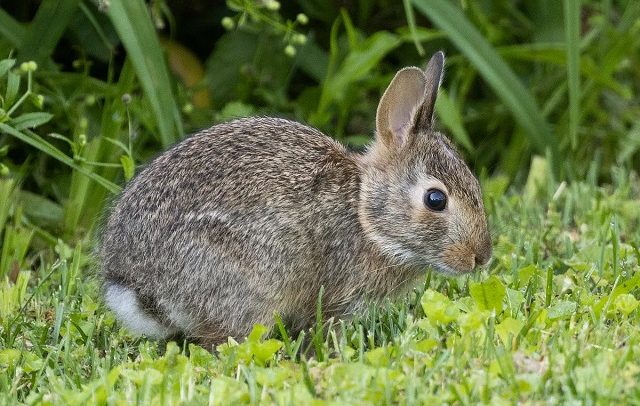The first attempt made at promoting rabbit (Oryctolagus cuniculus) production on a large scale in Ghana was the National Rabbit Project, established at Kwabenya in the Greater Accra Region in 1972 with a Ghana Government equity contribution of US$184,000.
The project was aimed at producing good quality beefy-giant types of rabbits for upgrading the local animals for higher meat production. 80 local rabbits purchased from backyard farmers were used as foundation stock.
Between 1972 and 1974, several hundred rabbits of various breeds were provided to the National Rabbit Project by the Governments of Denmark, Switzerland and the United States.
The initial stock increased to nearly 4,000 rabbits by 1975. Unfortunately, the project collapsed in 1978 and the remaining stock was transferred to the Nungua Livestock Breeding Station of the Ministry of Food and Agriculture.
Rabbits currently kept in Ghana comprise varied genetic combinations of local and exotic breeds of California, Chinchilla, New Zealand White and Flemish Giant rabbits.
The cross breeds exhibit various attractive hair colours including white, brown and black, either as a whole or in combinations, and the cross breeds are popular among rabbit keepers in the country as a result of their higher growth rate and meat production.
| New Zealand White | Flemish Giant | Chinchilla |
Ghana is a predominantly an agricultural country with crop and livestock farming as the key components of the national agriculture development strategy.
Agriculture employed nearly half of the workforce and contributed about 20% to the nation’s Gross Domestic Product (GDP) in 2022. Crops had the highest agricultural value to the Gross Domestic Product (GDP), at roughly GHS29 billion (approximately 2.43 billion U.S. dollars).
This was followed by the contribution from livestock production, which reached an amount of around GHS4.9 billion (roughly 409.86 million U.S. dollars).
However, the nation’s meat production is inadequate to meet the national consumption needs hence, large volumes of meat and meat products are imported annually to augment domestic production. Ghana imported a total of 184,100 livestock, comprising cattle, sheep and goats, in 2020 and 177,373 livestock in 2021 mainly for meat.
The country also imported and 192,571 metric tonnes (MT) of meat in 2020. The meat importation declined significantly to 36,543 MT, in 2021.
The nation’s meat consumption per capita was estimated at 13.8 kg in 2018 which is lower than the global average of 41.3 kg and the recommended value of 33 kg lean meat by Food and Agricultural Organisation of United Nations.
Conventional meat on the Ghanaian market includes beef (cattle), mutton (sheep), chevon (goat), poultry and pork (pig). One source of meat that has not been fully explored to help address the deficit in local meat requirement is rabbit meat.
Rabbit production can be made sustainable through the use of renewable on-farm resources such as crop residues obtained after harvesting the main product and forages for feeding, local materials for housing and the use of minimal labour including family labour.
Rabbits do not compete with humans for grains therefore their feeding does not pose a threat to human food security. Rearing rabbits is an important source of income for the small holder farmers who form majority of the farming population in Ghana.
The rabbit is ideal for the supply of adequate amount of animal protein to small sized families, thus avoiding the need for storage. Rabbits are small in size and docile and so can easily be handled by women, children and the handicap. Rabbits are very prolific animals having three to four liters per year with an average of six to eight offspring per litter.
The gestation period is very short lasting only 31 days, hence, returns on labour can be obtained in a short space of time, and the labour requirement for management is quite low.
Rabbits have excellent feed conversion efficiency and produce six more times meat than a cow on the same amount of feed and water, and can turn 20% of the protein they eat into edible meat. Also the consumption of rabbit meat is not affected by any socio-religious bottlenecks.
These attributes make the rabbit an ideal venture to create jobs for the teeming unemployed youth in the country.
Rabbit meat is all white, fine-grain, lean, highly palatable and easily digestible. It is high in protein, certain minerals and vitamins, and low in fat, sodium, cholesterol and calories as compared to other common meat types such as chicken, mutton, chevon, beef and pork.
Rabbit meat is said to be the most nutritious meat known to man. Also the meat is suitable for special diets, such as those for heart disease patients, the aged, as well as low sodium and weight reduction diets.
Senior Research Scientist, CSIR-Animal Research Institute
Lecturer, CSIR College of Science and Technology
By Dr. Doris Yaa Osei


